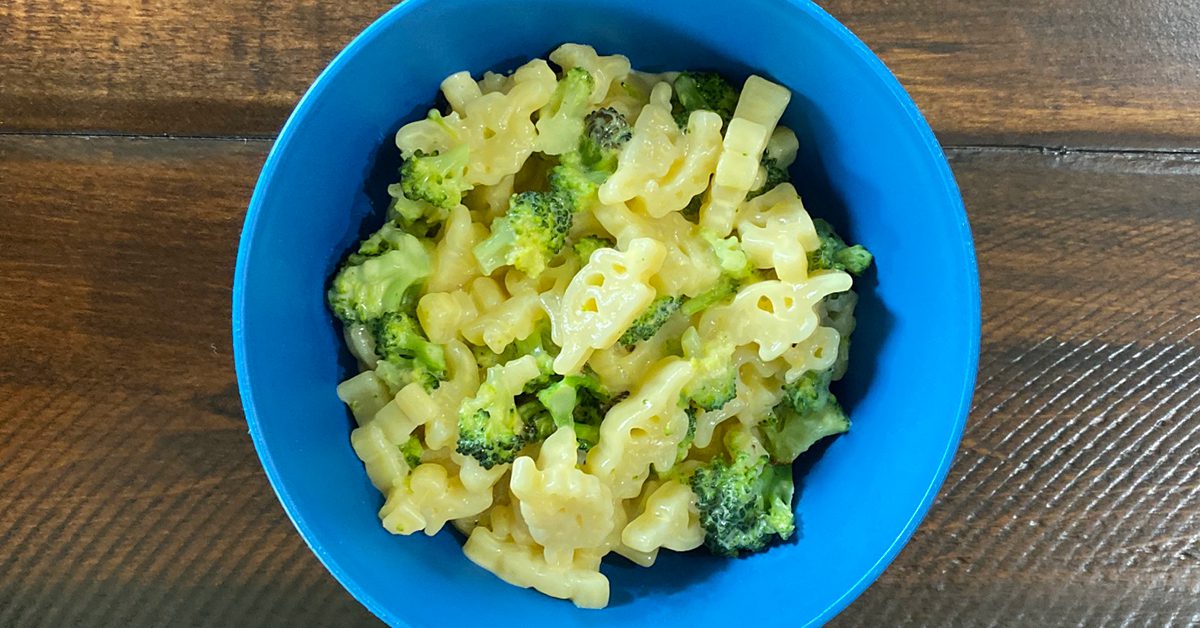WANT EVEN MORE HEALTHY IDEAS FROM SHAPE YOUR FUTURE?
I am a dietitian and health scientist, but I’m also a parent. I know how stressful it can be to ensure young children get adequate nutrition. Especially if they’re picky! Today, I’d like to offer you four actionable steps to form healthy mealtime practices in your home, daycare or classroom.

1. Growing healthy eaters takes time.
Kids often need repeated exposures (upwards of 15 times) to like a new food. While hiding vegetables in dishes may help kids consume more of them, it can also prevent them from acquiring a taste for them.
How to do it:
- Focus on one specific food each month. Serve it a couple of times a week in a variety of ways, such as fresh broccoli with dip, steamed broccoli in soup, etc.
- Serve vegetables as appetizers or snacks during meal prep, when your kids are hungriest.
- Celebrate each step of progress, no matter how small. Applaud them when they touch a new food with their finger, touch it to their lips, place it on their tongue and send it to their tummy!

2. Pick your battles.
Make mealtime fun and engaging! Kids love sensory experiences. Playing creative games can make meals more enjoyable, relieve some of the pressure and increase their willingness to taste new foods.
How to do it:
- Encourage your kids to “Eat a Rainbow” by including as many colors on their plates as possible, which also ensures a nutrient-dense meal. Challenge them to find specific colors and try them together.
- Offer non-food rewards, such as stickers or applause, for trying every food on the plate. It’s important to praise trying each food — not cleaning the entire plate.
- Invite your kids to engage all five senses during meals by searching for particular shapes or colors on their plates. After each bite, ask them about the flavors and textures they just experienced. Kids can respond with a thumbs up, thumbs down or in between.

3. Healthy eating goes beyond mealtime.
Include kids in other activities like choosing and preparing weekly meals. This keeps them engaged and exposes them to new foods. Plus, kids are more likely to try a meal they helped plan or prepare!
How to do it:
- Invite your kids to choose the toppings for the salad. Encourage a little tasting along the way for a bonus!
- Let your kids help plan the menu. For example, ask: “Would you prefer broccoli or Brussels sprouts?” Older kids may enjoy finding recipes in a book or online to try together.
- Keep fruits and vegetables accessible for after-school or evening snacks.

4. Support your children’s independence — but set boundaries.
Give your kids choices, but set them up for success by providing healthy parameters. Always remember that you are still in charge of which foods are accessible and when!
How to do it:
- Pair new foods with familiar favorites. For example, mix steamed broccoli into your kid’s favorite cheesy pasta.
- Focus on making a “happy tummy,” not a “happy plate.” Encourage children to listen for their body to tell them when they are full.
These are just a few ideas to help you create intentional mealtime routines that grow a healthy, well-rounded eater. Try one strategy at a time or combine them into new and exciting ideas that suit your family. Plus, get helpful tips from Healthy Eating Research. Then, put it all into practice with healthy kid-friendly recipes from Shape Your Future!

SUSAN B. SISSON , PHD, RDN, CHES, FACSM
Sam K. Viersen Family Foundation Presidential Professor
Associate Dean for Research
Chair, Department of Allied Health Sciences.
Associate Professor, Department of Nutritional Sciences
Director, Graduate Programs in Nutritional Sciences
Director, Behavioral Nutrition and Physical Activity Laboratory




